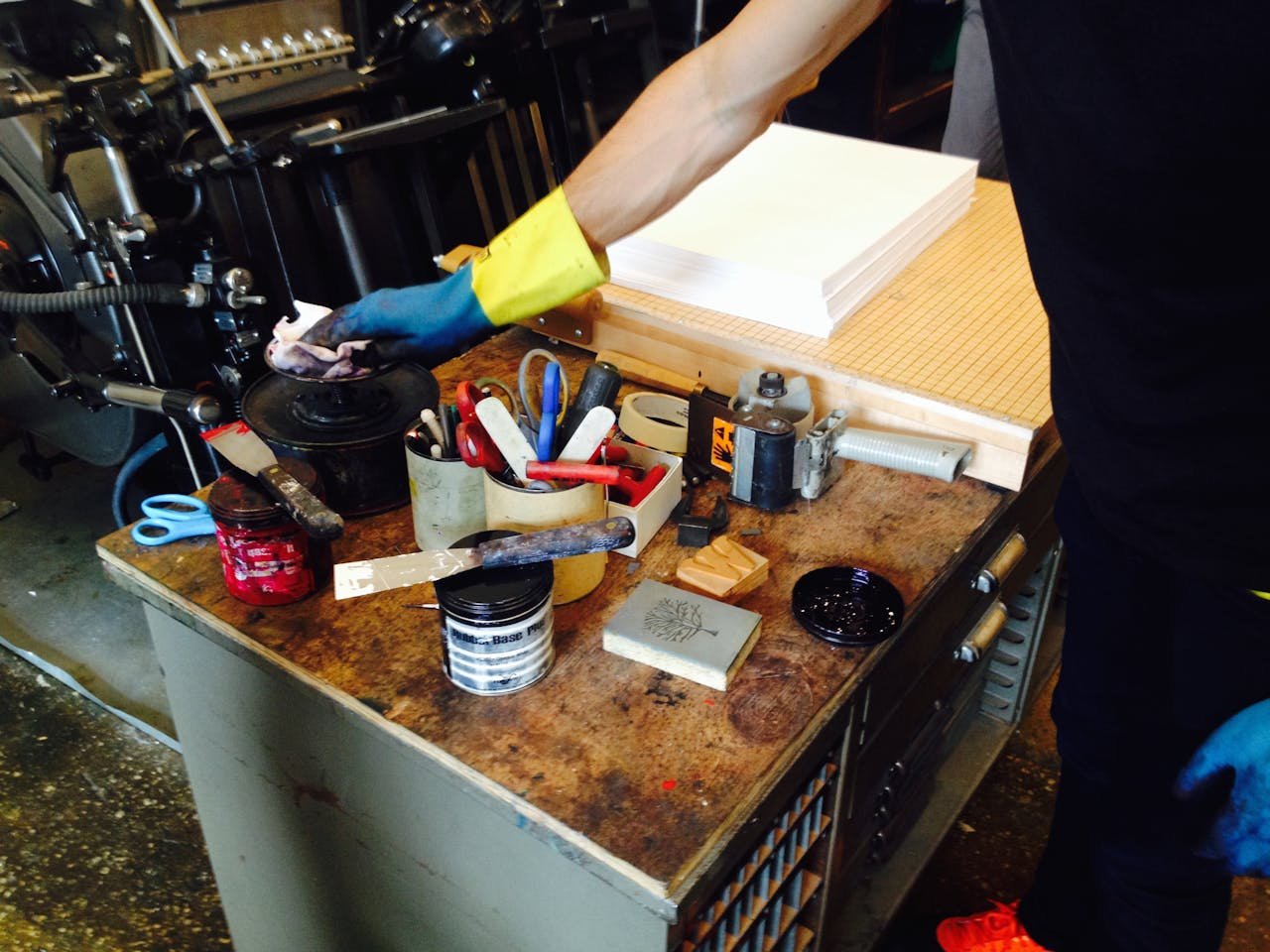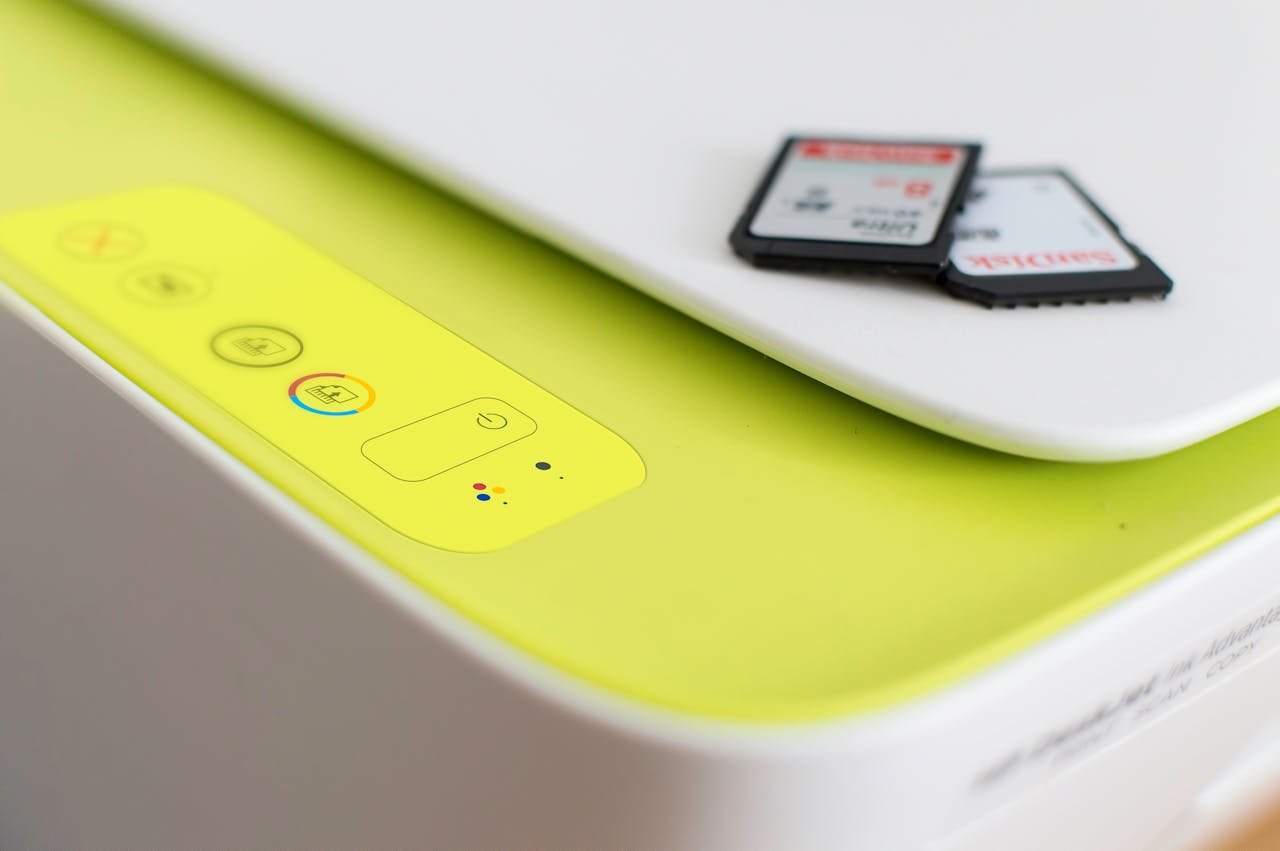The History of Computer Toners: From Innovation to India’s Adoption
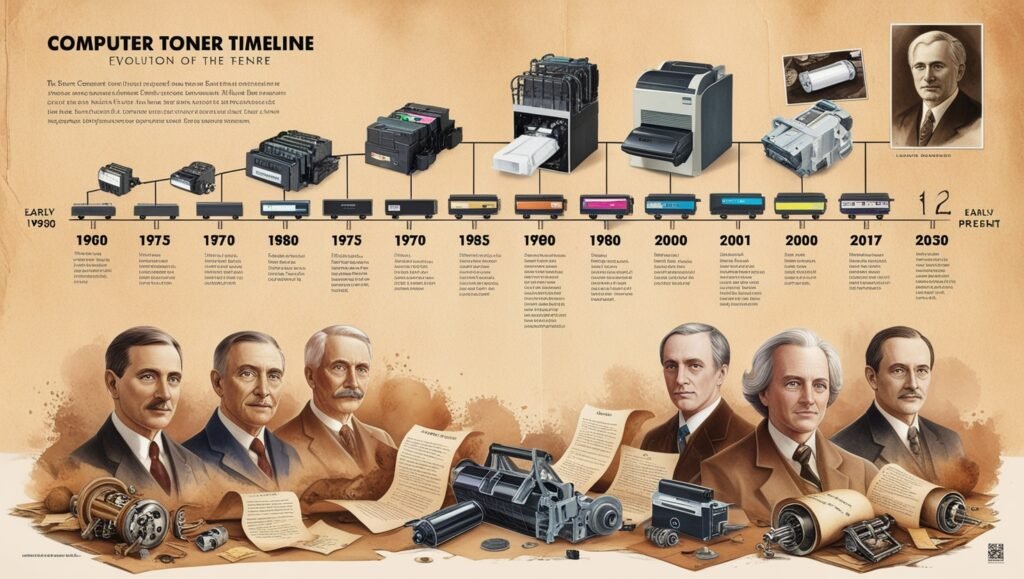
Introduction
In the digital age, printers have become an essential part of both personal and business environments, playing a critical role in producing documents, images, and various forms of physical data. Central to the function of laser printers is the toner—a fine, dry powder that adheres to paper to create printed text or images. The history of computer toner is a journey of technological innovation, from early developments to its widespread adoption in countries like India, where the demand for printers and toner has grown significantly due to the expansion of IT, education, and business sectors.
Early History: The Birth of Laser Printing
The history of toner is closely linked with the invention of laser printers. Before toners, traditional ink was used in printers, and these early devices operated much more slowly compared to modern printers. In the mid-20th century, this changed with the development of xerography, a dry printing process developed by Chester Carlson in 1938. However, it wasn’t until the 1970s when Xerox engineers developed the first commercial laser printer, the Xerox 9700, that toner became a vital component in the printing process.
Laser printing was introduced by Gary Starkweather, a Xerox engineer, in 1969. He combined Carlson’s xerographic process with a laser beam, creating a high-speed method for printing images and text. The introduction of the laser printer revolutionized the printing industry by improving speed, precision, and the quality of printed materials.
Toner, a fine dry powder made primarily from polymers, carbon, and other additives, was integral to this process. It would be fused to the paper through heat and pressure after being transferred using static electricity.
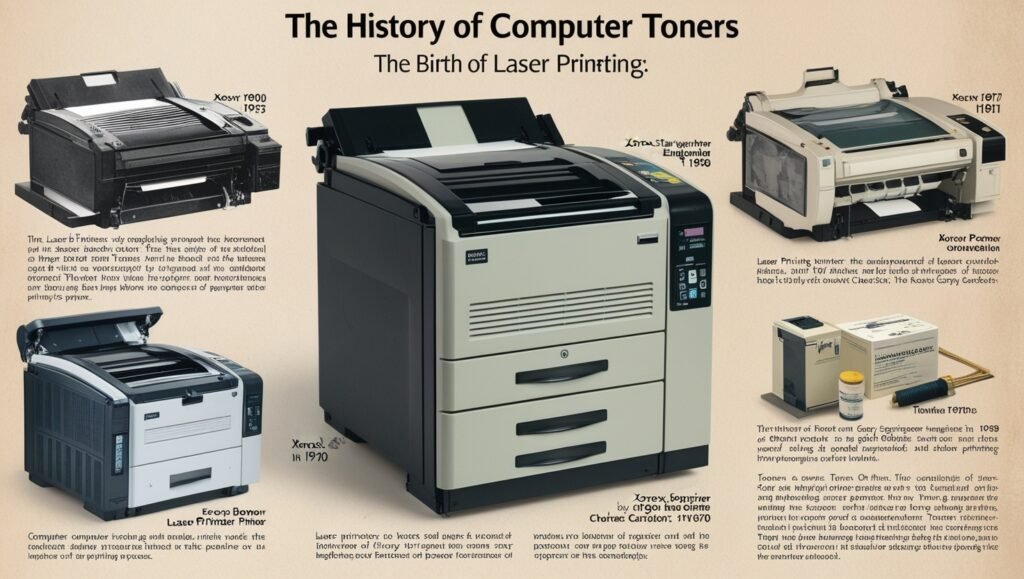
Development of Toner: From Powder to Precision
In its early days, toner consisted mainly of a mix of carbon powder and polymer. The carbon provided the black pigmentation, while the polymers allowed the toner to adhere to paper during the fusing process. Over time, toner formulation has evolved significantly. Early toners were messy, often requiring careful handling. Modern toners, however, are finely engineered to provide higher image resolution, precision, and even color printing capabilities.
As laser printers grew in popularity during the 1980s and 1990s, so too did the demand for better toner. Manufacturers like Xerox, Canon, Hewlett-Packard (HP), and Brother began investing in the development of specialized toner cartridges to improve print quality and printer performance. The introduction of color laser printers in the 1990s further advanced toner technology, as companies developed new pigment-based and polymer-based toners to create vivid color images.
Toner cartridges, which house the toner and the components necessary to deliver the toner onto paper, became a crucial innovation, making the process of replacing toner much more convenient. These cartridges evolved to include mechanisms that improved toner dispersion, reduced waste, and made printing more efficient.
Modern Toner Innovations: Environmental Considerations
In recent years, as environmental concerns have risen, toner manufacturers have made efforts to make toners more eco-friendly. Today’s toners are designed with various advancements, including recyclable cartridges, lower melting point polymers to reduce energy consumption during printing, and bio-based toners made from renewable resources. Additionally, remanufactured toner cartridges have become popular, allowing used cartridges to be refilled and reused, reducing waste.

Entry and Growth of Toner in India
India’s adoption of computer toners has mirrored the country’s rapid advancement in IT infrastructure and business development. The country’s booming IT sector, increasing urbanization, and expanding educational institutions have driven the need for efficient printing solutions.
India’s printer market has witnessed significant growth, particularly after the liberalization of the economy in the 1990s. As global tech companies like HP, Canon, and Samsung entered the Indian market, the demand for both printers and toners surged. Toner-based laser printers became especially popular in business and educational environments due to their cost-effectiveness and speed.
By the 2000s, local and international companies were manufacturing and supplying toners and cartridges to meet the growing demand. While original equipment manufacturer (OEM) toners dominated the market, the demand for remanufactured and compatible toner cartridges also rose, driven by the cost-sensitive nature of Indian consumers.
The widespread adoption of digital technology in the government and private sectors further expanded the toner market. India’s education sector, in particular, saw increased demand for affordable printing solutions. Additionally, the small and medium enterprise (SME) sector has been a significant contributor to the rise in demand for toner-based printers in India.
Challenges and the Future
One of the key challenges in India’s toner market is balancing cost and quality. While remanufactured toners provide a cheaper alternative, they sometimes come with quality and reliability issues, causing businesses to weigh their options between affordability and print quality. Additionally, counterfeit toner cartridges have been a problem, prompting many companies to invest in anti-counterfeit technologies and consumer education.
As India moves towards becoming a digital economy, the demand for printers and toners is expected to evolve. The shift towards digital documentation and paperless offices might reduce the overall need for printing, but certain sectors such as legal, education, and public administration will continue to rely heavily on printed documents.
Environmental concerns are also shaping the future of the toner industry in India. Indian companies and consumers are becoming more environmentally conscious, creating opportunities for eco-friendly toner solutions and remanufactured cartridges. Government policies promoting sustainability and the “Make in India” initiative might encourage local production of toner and toner cartridges in the future.
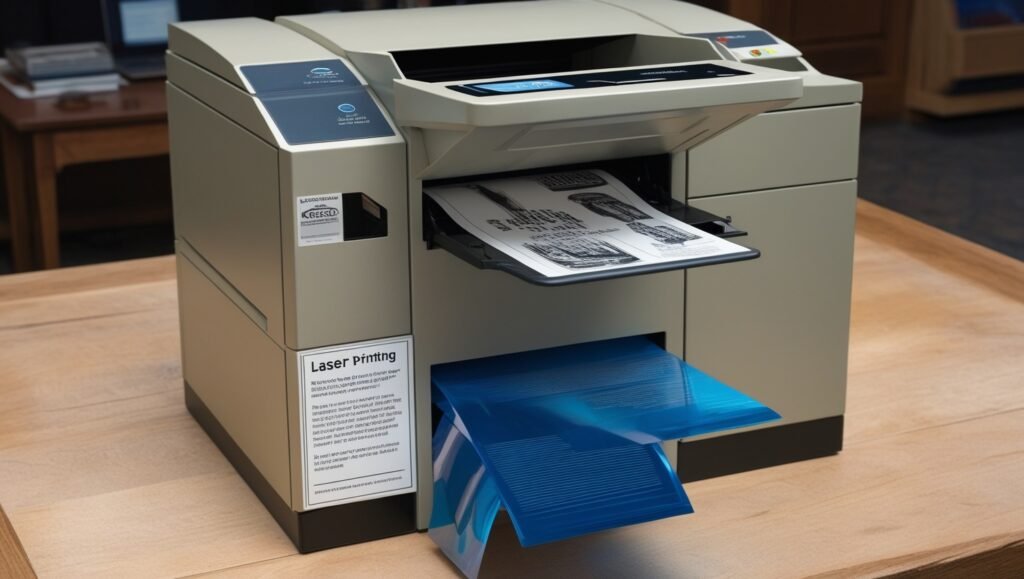
Conclusion
The history of computer toners is a testament to the rapid pace of technological innovation. From the early days of xerography to the modern laser printer, toners have played a key role in making printing more efficient and accessible. In India, the adoption of toners has grown significantly as the country continues to expand its IT and business sectors. The future of the toner industry, both globally and in India, will likely be shaped by technological advancements, cost considerations, and a growing emphasis on sustainability.

